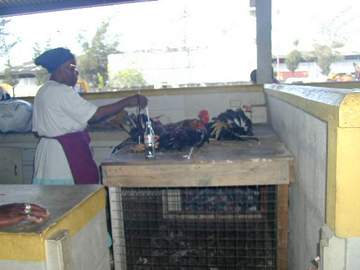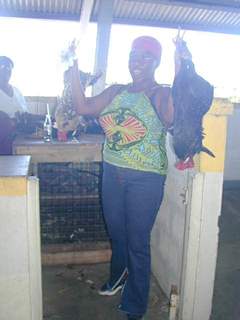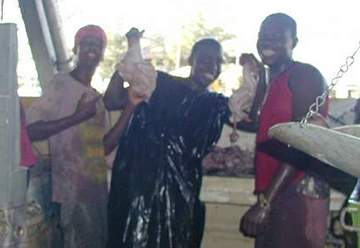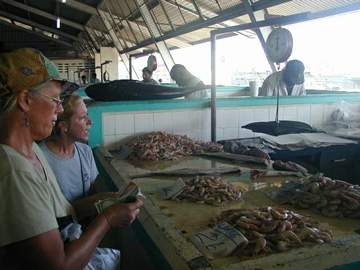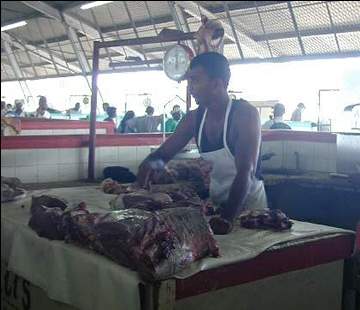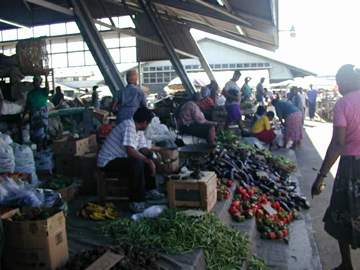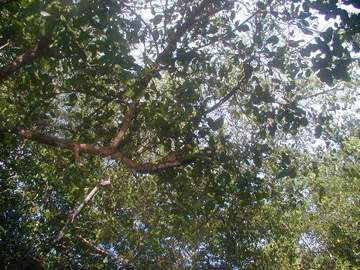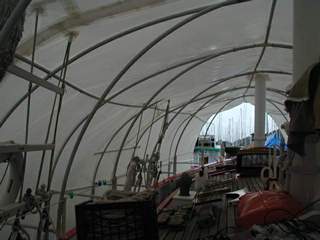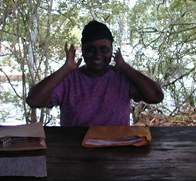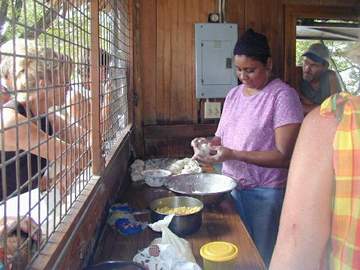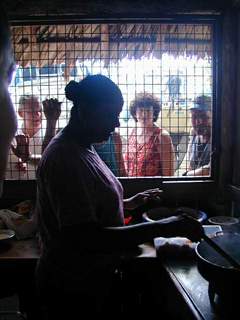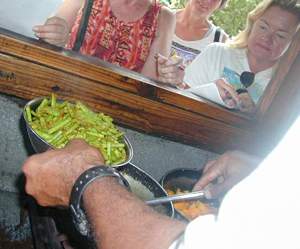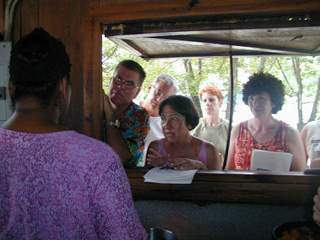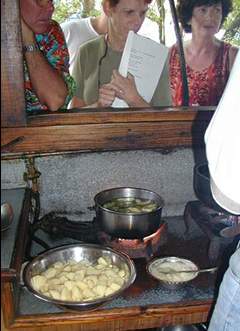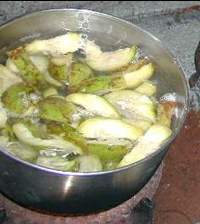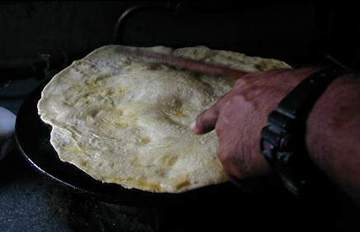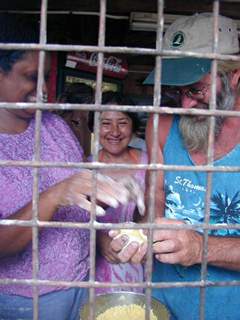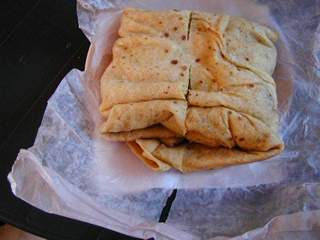Adventures aboard SV/Thaleia
|
Trinidad and Tobago |
| The Port of Spain market is by far the biggest we've seen in the Caribbean, and the permanent stalls sell fresh (still clucking) chickens, ducks, capons, beef, pork, fish and seafood, all at very reasonable prices. We've pigged out on fresh tuna every week and we'll be going back for more tomorrow.
|
The Trinis are all smiles and are very cooperative when they see a yankee with a camera! | |
|
These guys outdid themselves....they took a break from chicken plucking to pose for us. |
My friend Brenda and I are grabbing some jumbo shrimp....mmmmmmmmmmm....
| |
| Where's the beef? These guys butcher it to order.
|
And then there are several city blocks of veggies, dry goods, smoked and salted fish, cheese, clothes, and just about everything else that you can't imagine.
| |
|
This shy beauty helps her mother sell pumpkin, spinach and scallions (here they're called shives) every Saturday morning. | ||
|
Moving on...we visited the Caroni swamp to see the scarlet ibises. Unfortuneately, we saw more boa constrictors and mangroves than ibises. Can you see the boa in the picture below?
|
 | |
|
Here we are being hauled out of the water at Power Boats Marina in Chaguaramas Bay. This marina will be our home until we complete laying the new decks, painting the topsides, bottom, and various other smaller tasks.
|
Thaleia takes a ride through the boatyard... | |

| John
is watching Ray, the travel lift operator,as he deftly manuevers the boat through
the yard. |
Thaleia under her shrink-wrapped tent...this keeps the rain and the sun from dominating our work lives. In Trinidad during the rainy season, it rains every day. In the dry season, it only rains every other day! |
|
This is Grace at the Roti Shack in the marina preparing for her class in roti making. Rotis are one of the national foods, and every Trini homemaker worth her salt knows how to make them. Grace has agreed to teach the boating community the fine art of roti cuisine.
The Roti Shack is an outdoor affair with a small "kitchen" that sports 4 propane burners, a fridge, and some work space. Grace and her husband Gary prepare traditional breakfasts and lunches every day for the workers and the boaters who share their food with the birds that frequent the tables. |
| |
|
The kitchen is so small that the students stand outside and look in the window as Grace demonstrates the preparation of chicken chunks. |
Grace makes the dough for the rotis and lets it rest while the vegetables and chicken are being prepared. The dough is simply flour, baking powder, and water. It's kneaded until it bonds and becomes elastic, like bread dough. | |
| These beans start out as long, very long, about two feet long, string beans (called bodi and they come in rolls). They are cut into small pieces and sauteed in garlic, with a small amount of curry powder and turmeric just until crunchy. The curry powder used in all of the roti dishes is very mild and doesn't overpower the dish.
The garlic is a serious ingredient in Trinidadian cuisine. Grace uses a blender to puree her garlic cloves, then just spoons a generous portion into every pot. |
This is pumpkin cooking, again in olive oil and garlic. Salt is added and the pumpkin is mashed (below).
| |
|
The students are quite serious in their quest to learn Grace's secrets, and she shares willingly.
|
The chunks of chicken (bone in or boned) are prepared the same as the vegetables--oil, garlic, curry powder, turmeric, and a little water. | |
|
Potatoes and channa (chick peas) are prepared together. The channa are soaked and pre-cooked, and the potatoes are peeled and cut into healthy bite-sized chunks. This is then cooked with oil, garlic, curry powder, and turmeric for a few minutes, then hot water is added to finish cooking the potatoes.
|
This dish is the sweet part of the roti. It is green golden apple or green mango, depending which is in season. These are cut into slices leaving the skin on, then cooked in boiling water 3-4 minutes until they are tender. Then, in another pot, a bit of oil to cover the bottom of the pan is heated, and garlic is added and sauteed. The drained fruit is added along with some brown sugar, black anchara masala, hot pepper sauce (optional) and the mixture is cooked for a few minutes.
| |
| And now, the roti shell is prepared. The dough is portioned into balls the size of a large golf ball, then rolled into a large thin circle.
It is placed on a very hot griddle, brushed with oil, and then turned almost immediately with two wooden paddles. The roti shell is brushed with oil again, and turned a second time. Before you have time to turn around, the shell is bubbled up and ready to use.
|
Guys who single-hand their boats always take advantage of cooking classes....they have to do their own cooking, and besides, that's where the women are!
| |
|
For the finish, a small portion each dish is scooped onto the roti shell which is then wrapped into a square packet. For those who are brave, there is always pepper sauce to be added. We suggest that you ask for "slight" pepper rather than lots, because it's very very hot.
|
| |
